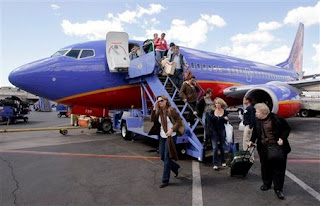This is an Air India 787 currently being made. And, by the way, Air India is not the launch consumer. It was ANA (All Nippon Airways) that wanted this plane to be built... back on April 26th, 2004! If you're confused, don't worry, because this is bizarre even for plane lovers alike. So, where's the snag? What's going on with this project in the first place? Why haven't they been flying all these years? It seems that in our day and age we have the ability to bang out planes like none other. To better understand what's going on, we need to understand why this plane is being built in the first place.
True, this plane was designed to kill some of Boeing's old planes such as the 757, 767, and even the jumbo 747. However, a key point to remember is if they're trying to kill the 747, more than likely they're trying to kill their previous bird: the Boeing 777 (which is slowly killing the 747). If you don't already know, the 777 is a VERY successful aircraft and was the first to be fully tested using computers before it ever flew. When the 777 was made, huge steps in technology were made that allowed us to create better methods of aircraft design and helped manufacturers to safely test new aircraft. So, why the hell get rid of all these planes including the 777? Simple:
1. Airlines want a new, state-of-the-art plane to use less fuel to get the job done.
Boeing's answer: several models of a new plane made of 80% composite material; the 787. At a glance, this was a tight idea. Instead of a metal box, airlines would use something close to a paper plane to perform at the same level. So, why is there a big issue? One word: Delamination.
First off, do not be terrified when you see this picture. What this is is an example of what happens when composite materials fails under pressure. This is something that Boeing has known for quite some time. However, this is the reason why you haven't flown on a 787. The main complaint stemmed from how the body and wing of the 787 were stressed under various flying conditions. To give a better picture, when a truck is made, the cab (where you sit) and the bed (where you put everything else) are separate. Manufacturer's essentially weld them together. It's the same principal with the body (where you sit) and wing (how you fly). The area connecting the two was weak and threw Boeing engineers for a loop. This scared them because composite materials, as opposed to various forms of metal, possess one scary attribute:
1. Composite materials do not visibly show signs of cracks or fatigue.
80% of your plane does not tell you what's going on... Yes, scream and freak out as much as you want, but Boeing wouldn't put a product out that they weren't making money on, so the 787 should be safe. However, you may find me on any other type of plane before you see me on a 787.
So, final words from me? As I would tell any person afraid to fly, don't worry. Airlines wouldn't have humans fly and run planes if they knew planes were death traps. Plus, airliners fly on the money passengers give them. So, if I had to fly on a 787, I'd be grateful to fly on a new plane and would probably enjoy it. Would it be my first choice? Well, as I think of that doctor who invested in it, I'm not sure if I'd put my money down on such a proposition.













